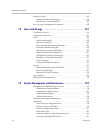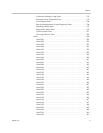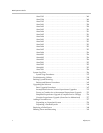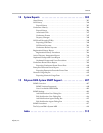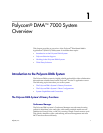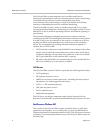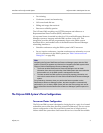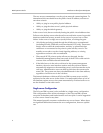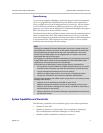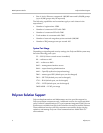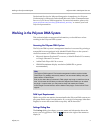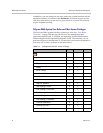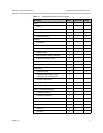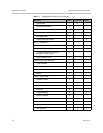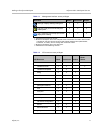
DMA Operations Guide Introduction to the Polycom DMA System
4 Polycom, Inc.
The two servers communicate over the private network connecting them. To
determine which one should host the public virtual IP address, each server
uses three criteria:
• Ability to ping its own public physical address
• Ability to ping the other server’s public physical address
• Ability to ping the default gateway
In the event of a tie, the server already hosting the public virtual address wins.
Failover to the backup server takes about five seconds in the event of a graceful
shutdown and about twenty seconds in the event of a power loss or other
failure. In the event of a single server (node) failure, two things happen:
• All calls that are being routed through the failed server are terminated
(including SIP calls, VMR calls, and routed mode H.323 calls). These users
simply need to redial the same number, and they’re placed back into
conference or reconnected to the point-to-point call they were in. The
standby server takes over the virtual signaling address, so existing
registrations and new calls are unaffected.
• Direct mode H.323 point-to-point calls are not dropped, but the
bandwidth management system loses track of them. This could result in
overuse of the available network bandwidth.
• If the failed server is the active web host for the system management
interface, the active user interface sessions end, the web host address
automatically migrates to the remaining server, and it becomes the active
web host. Administrative users can then log back into the system at the
same URL. The system can always be administered via the same address,
regardless of which server is the web host.
The internal databases within each Polycom DMA system server are fully
replicated to the other server in the cluster. If a catastrophic failure of one of
the database engines occurs, the system automatically switches itself over to
use the database on the other server.
Single-server Configuration
The Polycom DMA system is also available in a single-server configuration.
This configuration offers all the advantages of the Polycom DMA system
except the redundancy and fault tolerance at a lower price. It can be upgraded
to a two-server cluster at any time.
This manual generally assumes a redundant two-server cluster. Where there
are significant differences between the two configurations, those are spelled
out.



